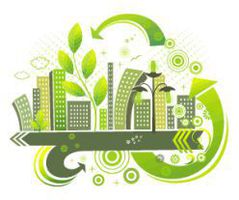
Go Green! The Sustainability of Masonry
What's it mean to be GREEN?
Green buildings- also known as healthy and high-performance buildings – provide a response to traditional building methods that contribute to poor occupant health, natural resource depletion, unnecessary maintenance and operational costs, and numerous negative environmental impacts. Using masonry for construction is the sustainable choice, and has numerous environmental benefits.
Since masonry lasts longer and requires little maintenance, the need to manufacture new materials is reduced with every new concrete masonry building. Concrete masonry materials can be recycled for other projects into new masonry materials or aggregates. The ability to reuse existing masonry buildings, including entire structures or the core structure, further enhances its sustainable properties.
If new materials are required, masonry can often be manufactured locally, reducing transportation requirements. Masonry also requires less specialized equipment for construction, further reducing impacts on the environment.
Masonry can significantly reduce the energy usage of a building, because the structure stays warmer or cooler longer. This consistent temperature helps lower energy costs by shifting peak loads to non-peak hours, while ensuring the comfort of those who live and work inside the building.
Construction requirements for masonry are minimal. Large equipment is not necessary for delivery or placement, and staging areas need not be large. These factors reduce the impact that masonry construction has on the environment. Indoor air quality is optimized for occupants, because integral colored masonry materials require no paints or adhesives, and are not mold-friendly environments.


